Sound performance
For the purpose of this review, I used the Beyerdynamic DT900 Pro X, the Sennheiser HD660S2, and the lovely FiiO FF3. For the source, I chose the Astell&Kern Kann Max, the FiiO M17, and the new but mighty FiiO M15S. All files were streamed from Spotify for convenience, and Apple Music for Hi-Res source, and my own library via Roon.
Overall signature
So how is Astell’s new CA1000T? Is the new DAC and tube making a real difference? Long story short: yes!
Out of the box, and paired with the Beyerdynamic (my all-around headphone) the Astell&Kern ACRO CA1000T behaves exceptionally well. Thanks to its massive power reserve, I even preferred this player to my SE180, even if the latter seemed to give me better highs overall. But, on the long run, if I had to choose one device between the two, I’d surely keep the CA1000T: bass goes lower, ADSR is better and on my usual techno tracklist, the big boy sounded fuller, stiffer and quite surprisingly, more natural.
Clearly, the new circuit design contributes to its remarkable transparency, and put in OPAMP mode, the CA1000T delivered music in its purest form, whatever the source. I tried local tracks, some Spotify and of course Apple Music – which worked strangely good here – and every time I was gifted with expensive soundstage, impressive imaging, and superb instrument separation. It’s not as smooth and refined as the PA10 I reviewed last time, but I do think that it’s a matter of personal appreciation in this case, as both devices showcased the subtleties and micro-details in each recording.
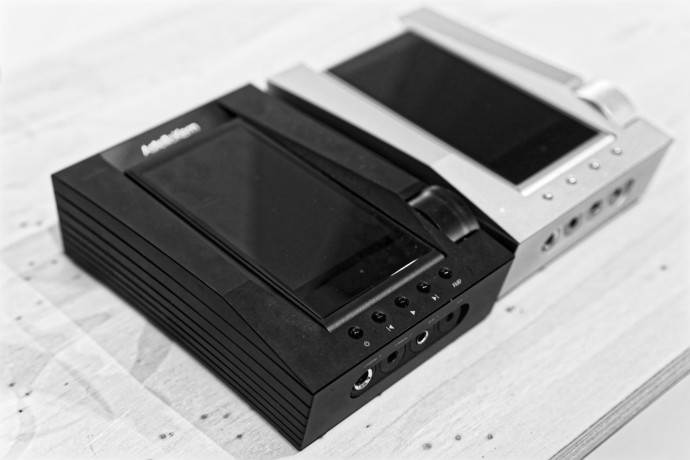
Every brand has a forte, something that makes it loveable for some, hateful for others. FiiO offers catchy mediums, Shanling sharp high-mids, iBasso catchy lows, but with the CA1000T, A&K seems to aim for a more balanced approach, closer to the Kann and Kann Max. In that regards, it’s a great working device and if I don’t have the right knowledge, some of my colleagues borrowed the device for a quick mastering session, that ended up with very enthusiastic feedback.
Paired with my FiiO SP3, I began my listening with A&K embedded track – Spanish Harlem and In A mellow Tone – just out of curiosity and also because I’ve already heard them more than a few hundred times now, on many, many Astell’s players. And yet, if I was not blown away, I was still deeply impressed by how refined the new player sounded, even more considering the size of the speakers.
I did the same test with my KEF LS50 Wireless and compared to my Hifiman EF400, my usual source for those speakers, the CA1000T clearly outshines the Hifiman – which was expected considering the wide price gap, but still! Better layering, faster transients and more importantly enhanced detail retrieval.
Paired with the Focal Celestee, the A&K CA1000T showcased its ability to handle the most demanding headphones with ease. Truthfully, the FiiO M17 outputs a little more power, and if you really want to push your big planar to the max, the FiiO will give that extra level of punch… if you really want to get deaf! On a daily basis, even the biggest can won’t be able to take done with the embedded amp section and whatever the headset, the CA1000T gave me clean bass, exquisite highs, and amazing vocals.
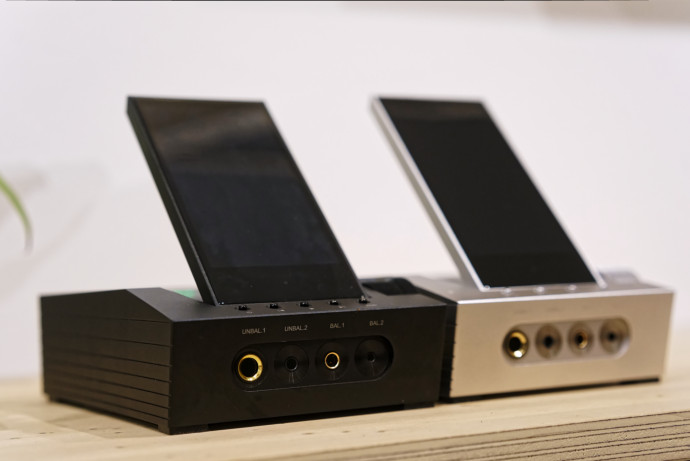
In comparison to my SE180 the device shared a linear and analytical sound signature, with A&K usual acute rendering of both male and female vocals. Head to head with the “old” CA1000, the connection is obvious and if the two players are already a few years apart, the A&K magic remains unbroken. It’s definitely better and n my techno track list, the bass reached abyssal levels, without ever impeding on the other frequencies range: the more I asked, the more I got and this was quickly addictive. Instruments are perfectly defined, transients are blazing fast and the longer you listen, the more you get accustomed to those uncanny moments where, out of nowhere, the voice seems to appear right in front of you.
The sound is more refined, with a wider soundstage, sharper mids/highs, and a slightly cleaner background – if that was ever necessary. I know it seems overused today to say that, but it’s really as if someone removed a veil, placed upon your ears before. Layering is razor-sharp and the sound stage pinpoints accurate, especially when you use big headphones like the Sennheiser or cans like Meze Empyrean.
And if the tube mode is lovely to listen too, thanks to that extra warmth inherent of the technology, my go to mode always remained the Hybrid mode, which gave me the best of both worlds. It delivers ample power and maintains its exceptional sound quality across a wide range of headphones and IEMs, quite amazing actually.
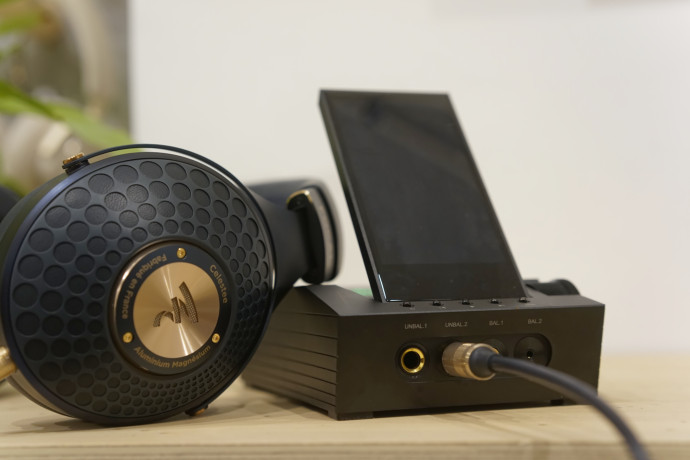
Finally, if the output power has also been improved (the CA100T can now reach 15Vrms!) the best feature here remains the 150 volume steps. No other brand gives you so much finesse to fine-tune your volume, even if no gain settings are available. And, even with my super sensitive Onkyo CIEM, I could never hear ANY noise or interference. Combined with its super-low distortion, this creates the canvas for an incredibly immersive sonic experience, whether you chose streaming or local files
So yeah, to sum it up, it sounds as good as it looks, which means terrific!
Tonality
Highs: exquisite. Crisp and precise, the CA1000T presentation remains smooth and non-fatiguing, delivering a pristine render at every given volume. The amplifier’s hybrid design lends a natural and airy quality to the highs, ensuring that even the most delicate nuances are reproduced faithfully. And with A&K traditional “touch”, the CA1000T is an excellent choice for those seeking a transparent sound signature.
Good test track : Bernard’s Song – Veronique Sansson
Mids: massive soundstage, exceptional definition. As for the highs, the mids has been given the same amount of care and voices are absolutely brilliant. I listened to Speaking of the End – Lapsley and each breath, each note gave me goosebumps. Sure, it’s easy with acoustic tracks, but I dare you to find the same sensation on another Sabre player. This is especially true with big cans and hybrid IEM, who love its large power reserve, but even paired with classics like the Meze 99 Classics, the A&K delivers superb vocals, almost effortlessly.
Good test track: Obama – Dombrance
Lows: more power, lower lows. The CA1000T lows reached abyssal levels, much more than I’d expect! Paired with the Audeze LCD-X or my UM Maestro, I could hear the rumble of the bass, even at (very) low volume level. The player really surprised me in a good way, and this is honestly my favorite A&K in this regard now.
Good test track : The Return – Pylot
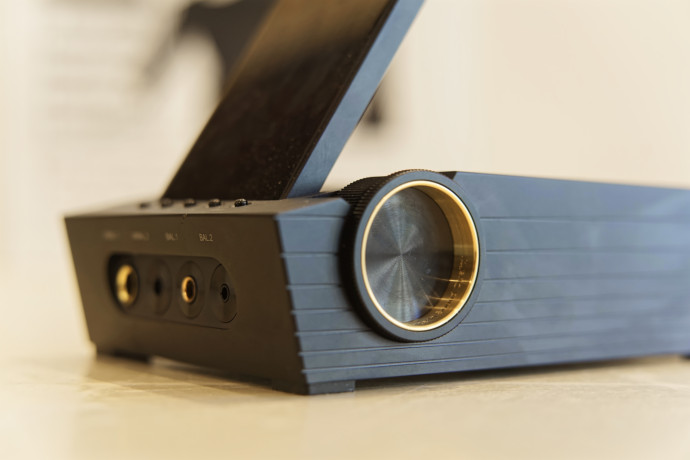
Noise and power
Noise: needless to say that the Acro CA1000T is absolutely dead silent in any conditions. Even when I used Spotify or connected my computer to the player in Bluetooth, I didn’t hear any hiss or hum. Great!
Power: power-wise, you’ll be able to drive any headphone of your catalog with the CA1000T. It’s incredibly powerful, but never too much and you always feel in control. Amazing!
Conclusion
Evolutionary rather than revolutionary, the Acro CA1000T is, first and foremost, an enhanced version of the A&K high-end all-in-one desktop solution. A majestic source, designed to become the one and only device you shall ever need to drive all your headphones, amplifiers and even speakers.
Sound-wise, the result is astounding and since I got mine, I have to say that it succeeded in his task – replacing almost ally my analog sources, both as a DAC/Amp and as a streamer. In fact, even compared to higher end desktop gear I own like Auralic or Rose, the CA1000T achieved some musical prowess that usually belong to the upper range (and yes I know that this device is already pricey for normal mortals).
But, like every superhero, the Acro is afflicted by one fatal flaw: it’s damn slow. Compared to my SE180, the difference is already palpable, but face-to-face with the FiiO M17, the lagginess is even more striking. Maybe that won’t be an issue for you, especially if you only play music from the internal storage, but in an era of hi-res streaming, this is an Achille’s heel in my eye.
So yeah, an amazing device overall, but not perfect alas – I wish it would be!
Pros:
– Excellent sound performances
– Very comprehensive layout, one of the most versatile source
– Powerful outputs with three differents signatures
– Amazing build quality
– Can be carried (almost) everywhere in your house/office
Cons:
– Slow CPU that makes third-party apps difficult to use
– A bit pricey
________
Page 1: About the brand, design, layout
Page 2: UI & Usage
Page 3: Specifications
Page 4: Sound performances






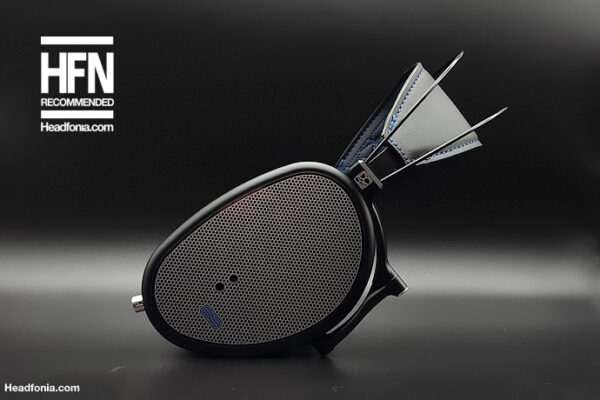
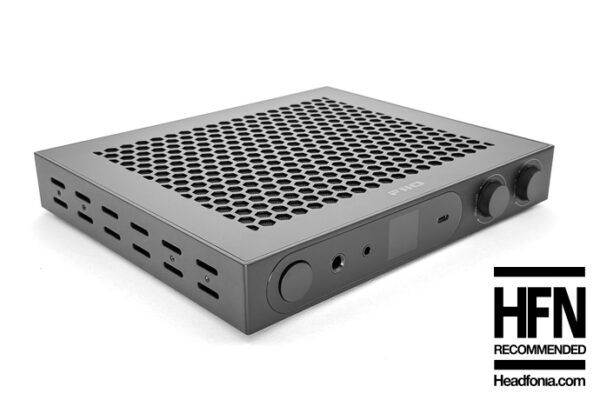
Willem
Hi Nanotechnos et al
Would you be able to assess / indicate the possible difference between the two in the following use case?
External DAP – LO 4.4mm – CA1000T in Tube mode
Compared to
External DAP – LO 4.4mm – Cayin C9 in Tube mode
Being both Korg NuTube capable amps, I would be interested in sonic differences between the two setups